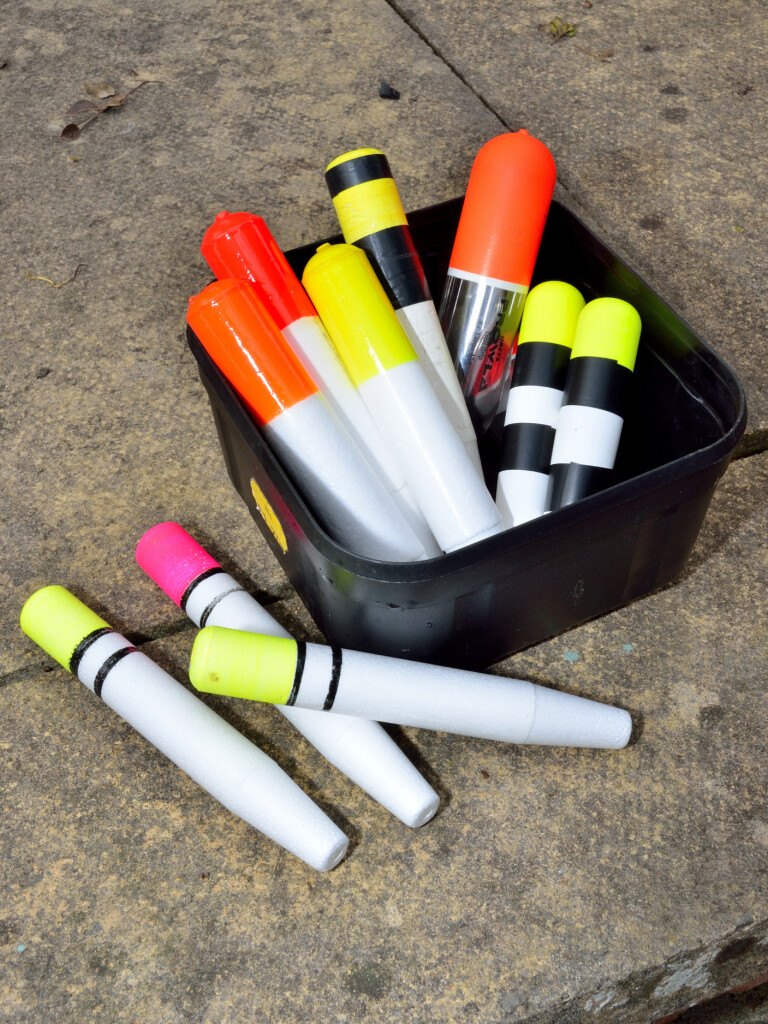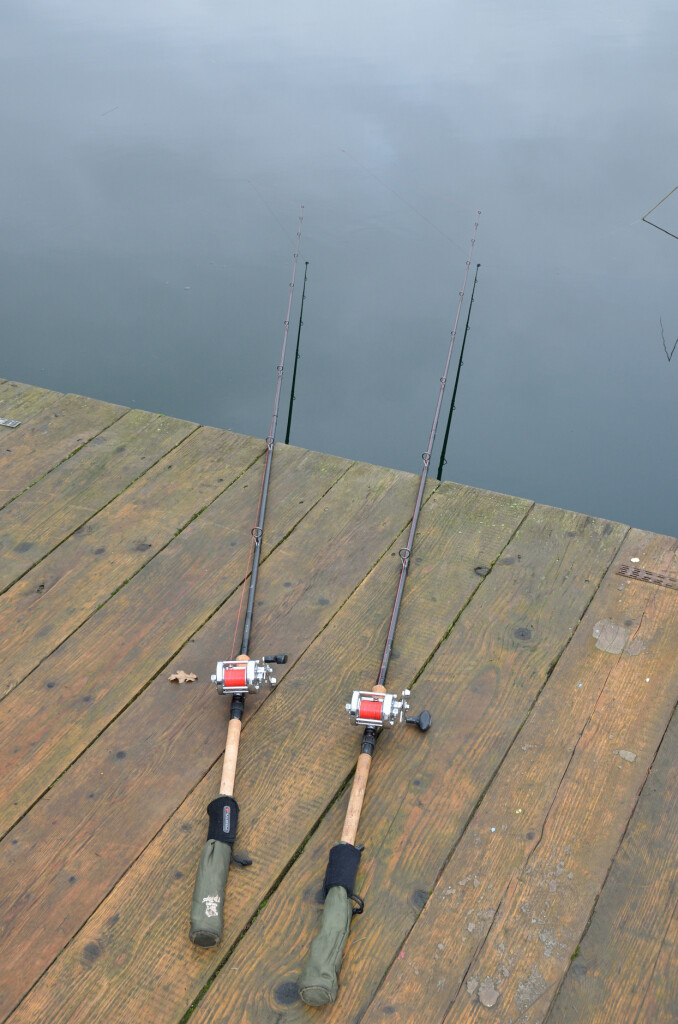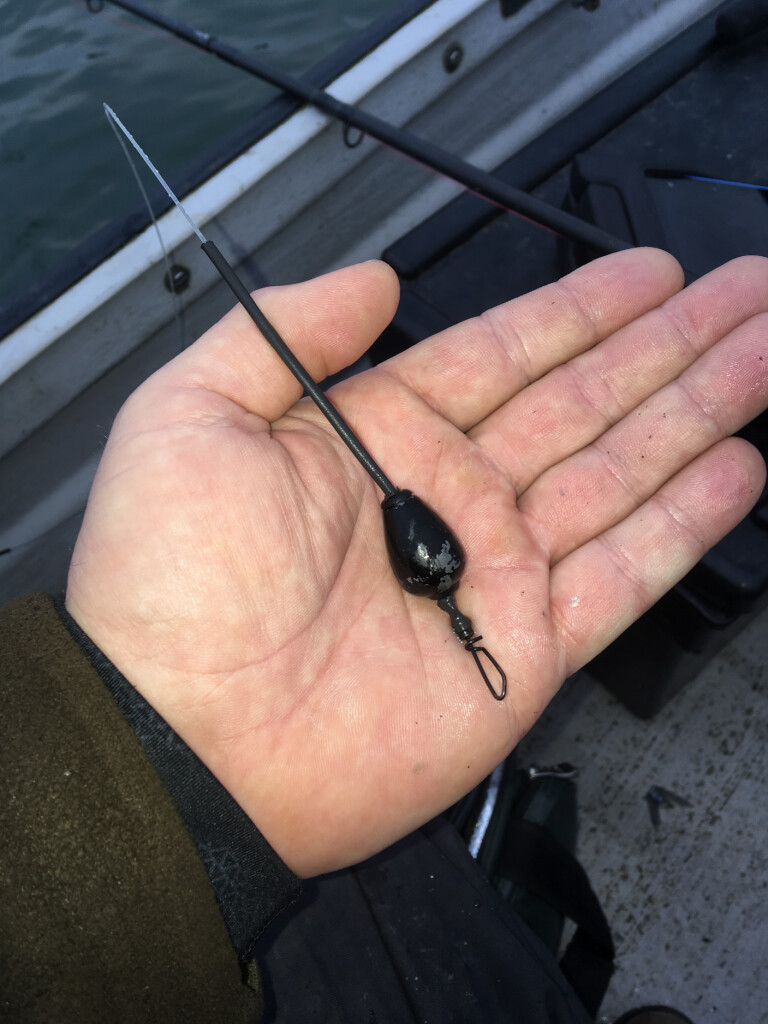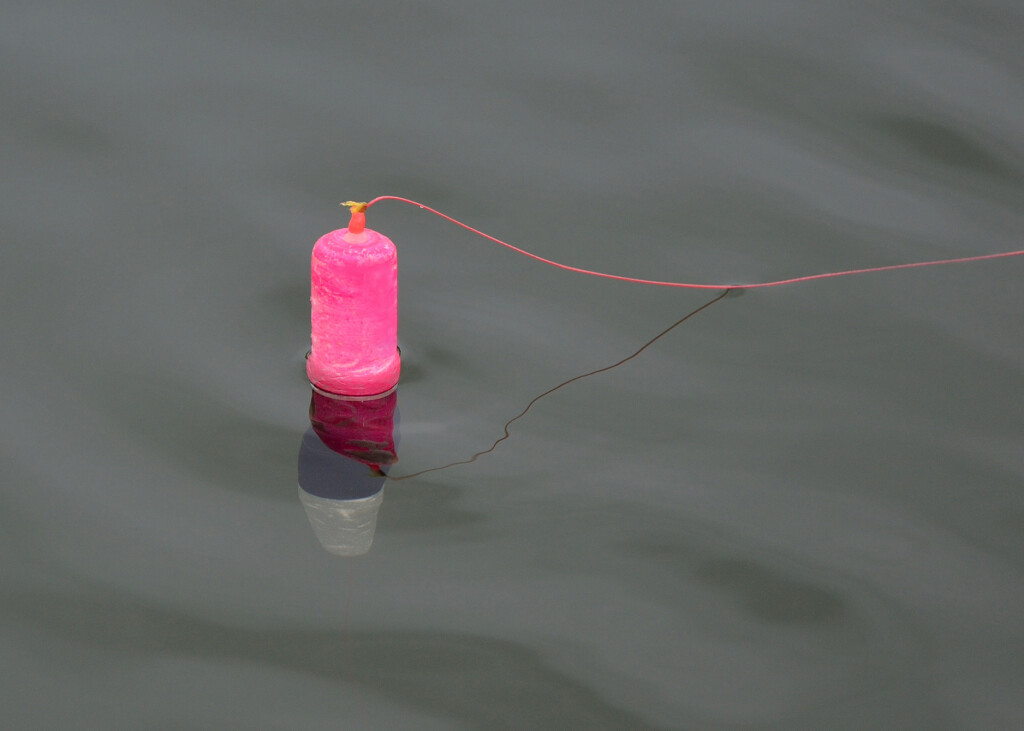Float vs Leger
Float fishing for pike is that typical image most anglers get in their heads when anyone thinks “deadbaiting” – though, in actual fact, I would argue that most anglers who are deadbaiting these days do so legering with their rods on various types of alarms, but which is more effective?
Legering;
As I said previously legering is quite possibly the most common form of deadbait fishing for pike. I think this is because it’s a common method for other species, and feels comfortable to most pike anglers – who may have come from a background of fishing for other species.
It is a great way to fish statically for pike, but there are a few checkpoints that need looking at to make sure it’s effective and safe.
The biggest mistake that most anglers make when legering is not using a large enough free-running weight. It is surprising how much lead you actually need to achieve a true free-running presentation, and it’s usually 3oz+, for extreme range I sometimes go up to 5oz with it being dropped off by a bait boat. You need this amount of weight to tighten for the correct indication, especially with floating braid, and you also need this weight to act as a pivot point when a pike takes the bait. The weight should be the anchor point and not move, and the line slip through the run ring without dislodging it. If the lead becomes dislodged it bounces around and drags about, adding resistance to the taking fish – which can cause dropped runs and drop-back takes.
You can get drop-backs when fishing with running leads, even if you shouldn’t do in theory. This is usually because, as discussed, the weight is too light. But it can also occur if the rig is tangled, or a pike runs towards you fast and pulls the weight free. Due to this is it important to use a drop-back indicator on the rod – the best type is fixed on the rear rod rest and fishes under the reel, so you can effectively fish “open-bail” arm, which is possibly the least resistance method you can have.
Floats fishing;
Floats come in all various shapes and sizes, some designed for very specific ways of fishing. So straight away you could conclude that they are a more versatile way of fishing than ledgering.
The disadvantage of course is that you will never fish a float as far out as you can a legered bait. In reality there are very few waters where you need to fish at extreme ranges anyway.
In most instances I prefer float fishing, simply for ease of use in most cases. When your rods are rigged with floats you don’t have to carry all the auxiliary gear, banksticks, alarms, etc that is associated with leger fishing. I tend to fish quite short sessions and I can quickly bait up, cast out, and put my rod on the ground, to be fishing in each swim for 10 minutes or so before moving on.
I also think there is an advantage to float fishing on most waters in that it is a different presentation from what the pike are used to – if everyone else is legering. The line comes up from the weight to the float at a steep angle and then cuts across the surface, so you don’t have three tight bow strings cutting through the swim for the pike to spook on.
I prefer a simple inline float and a short up-trace (which not only prevents bite-offs, but also helps prevent tangles). I use a light semi-fixed egg sinker on my up-trace to hold the bait down on the deck, usually I find 14 – 21g egg sinkers enough to hold on most stillwaters unless there is a lot of flow. I set the float slightly over depth so it lays flat on the surface, and will slightly cock with the bow of the line. There is no need to have them too tight – as when the pike sucks the bait in and moves off the float will move in direction of travel of the taking pike.
Best of both worlds.
Of course you can amalgamate both float fishing and leger fishing by using a float-leger system. To be truly float-legering you need to fish a large running lead (2 – 3oz) then have a decent sized float (usually a pencil float) that is set slightly over depth. The line is then tightened so the float is just cocked, making a very sensitive and visible set up. To be honest I very rarely use this set up, simply because I find on hard-fished waters that offers too much resistance to a taking pike, or rather it is the change in resistance as the float is pulled down to the lead, so you get the resistance of the lead and the float at the same time. However there are a lot of anglers that love float legering and don’t have the same issues. Probably the best reason to use true float legering is where you are fishing over rocks or weed, and want to keep the mainline away from these but still need to cast your bait a fair distance.
Tip
Use enough weight;
When float fishing make sure your egg sinker is heavy enough to pin your bait on the deck. If your floats are dragging around the presentation is strange to the pike, and the movement can pull the hooks into weed or a snag at the worst, or at the least pick up debris on them and mask the points. In strong undercurrents I’m not too upset about going heavier on the semi-fixed lead, as it will be balanced out by the float when the fish takes the bait.
Don’t be afraid of using a big float;
Floats come in all shapes and sizes, but most pike anglers nearly always use the smallest they can get away with. A smaller float will offer less resistance to the pike, but may be harder to see, especially in windy conditions or at range. For 99% of my fishing I use a large sea-type float. Not only can you not miss them when on the water, but when rigged correctly they counter the weight on the line and the bait. You know when you have it right as the float will slide along the top, rather then being pulled under on the take, and the resistance will stay the same.








